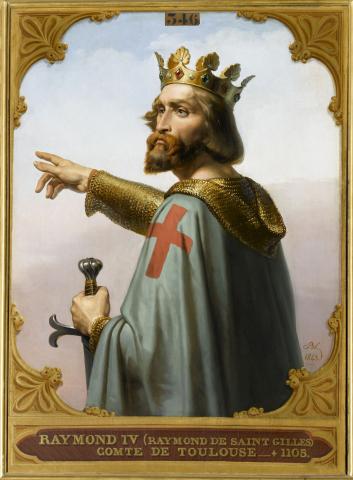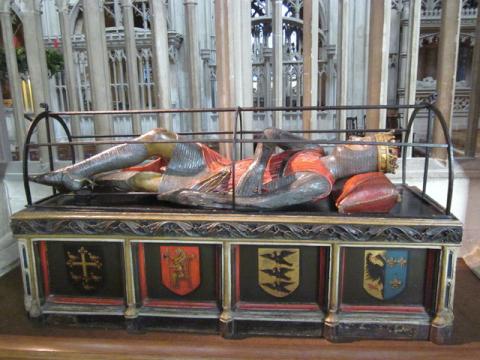(1096) The second and third crusader contingents come to Constantinople. The second one comes from what is now southern France (Provence/Languedoc); the third consists mostly of Normans and others, from Flanders, France, and Italy. The last group, on landing at Dyrrachium, is arrested by the local Byzantine governor and sent to Constantinople to swear loyalty to the emperor.
1.3.1
Sclavīniae: now roughly Albania, North Macedonia, and Bulgaria. Raymond had crossed the Alps into Northern Italy and gone around the Adriatic by road.
comes dē Sānctō Egidīō Raimūndus: Raymond of Toulouse, who was also Count of Saint Gilles, his preferred title.
Podiēnsis epīscopus: Adhémar of Le Puy; bishop and papal legate.
1.3.2
per antīquam Rōmae viam: i.e., the old Via Egnatia, the Roman road from Durazzo (modern Dures, in Albania) to Constantinople.
Boamundus: Bohemond of Taranto, son of Robert Guiscard (Robert de Hauteville), the famous Norman warlord of Southern Italy. Bohemond was a formidable warrior and leader, and had fought with some success against the Byzantines; he is in some sense the hero of the Gesta Francorum.
Richārdus dē Prīncipātū: Richard of the Principality, son of the Count of Salerno and a relative of Bohemond. Eventually he ruled Edessa (1105–8).
Rotbertus comes Flandrēnsis: Robert of Flanders. He had already been a pilgrim to Jerusalem (1086–89) and had developed good relations with the emperor Alexius.
Rotbertus Nortmannus: Robert of Normandy, also called Robert Curthose, because he was short. He was Duke of Normandy, the eldest son of William the Conqueror, and a cousin of Robert of Flanders.
Hugo Magnus: Hugh of Vermandois, brother of Philip I of France. “Magnus” may be a misunderstanding of “maisné” i.e. “the younger.”
Evrārdus dē Puisātiō: Everard of Puiset, Vicomte of Chartres.
Achārdus dē Monte Merloi: Achard of Montmerle.
Isuārdus dē Musōne: Isard of Mouzon.
Brandosim: Roman Brundisium, modern Brindisi. The accusative ending in –im is CL, especially for Greek nouns, which may help to explain the ending here; see AG § 75.
Barim: Roman Barium, modern Bari.
Otrentum: modern Otranto.
Willelmus Marchīsī fīlius: William son of the Marquis, brother of Tancred and nephew of Bohemond.
Dyrrachium: Durazzo, modern Durrës, in Albania.
prūdentissimōs: in ML the superlative is equivalent to the positive or the comparative.
mala cōgitātiō: this is now the subject, though the sentence began with dux illius loci as the subject; the breakdown of grammar is called anacolouthon (Greek for “it doesn’t follow”). In CL this can be a conscious rhetorical device, but it is also characteristic of colloquial Latin and ML. Our author is probably overly suspicious of the Byzantines; Anna Comnena says her father made sure the crusaders were welcomed (Alexiad 10.9).
imperātōrī … dūcī: CL would be ad imperatorem duci. They arrived in November, 1095.
quō eī fidēlitātem facerent: “for them to swear loyalty to him.” fidelitatem facere is a ML idiom.




